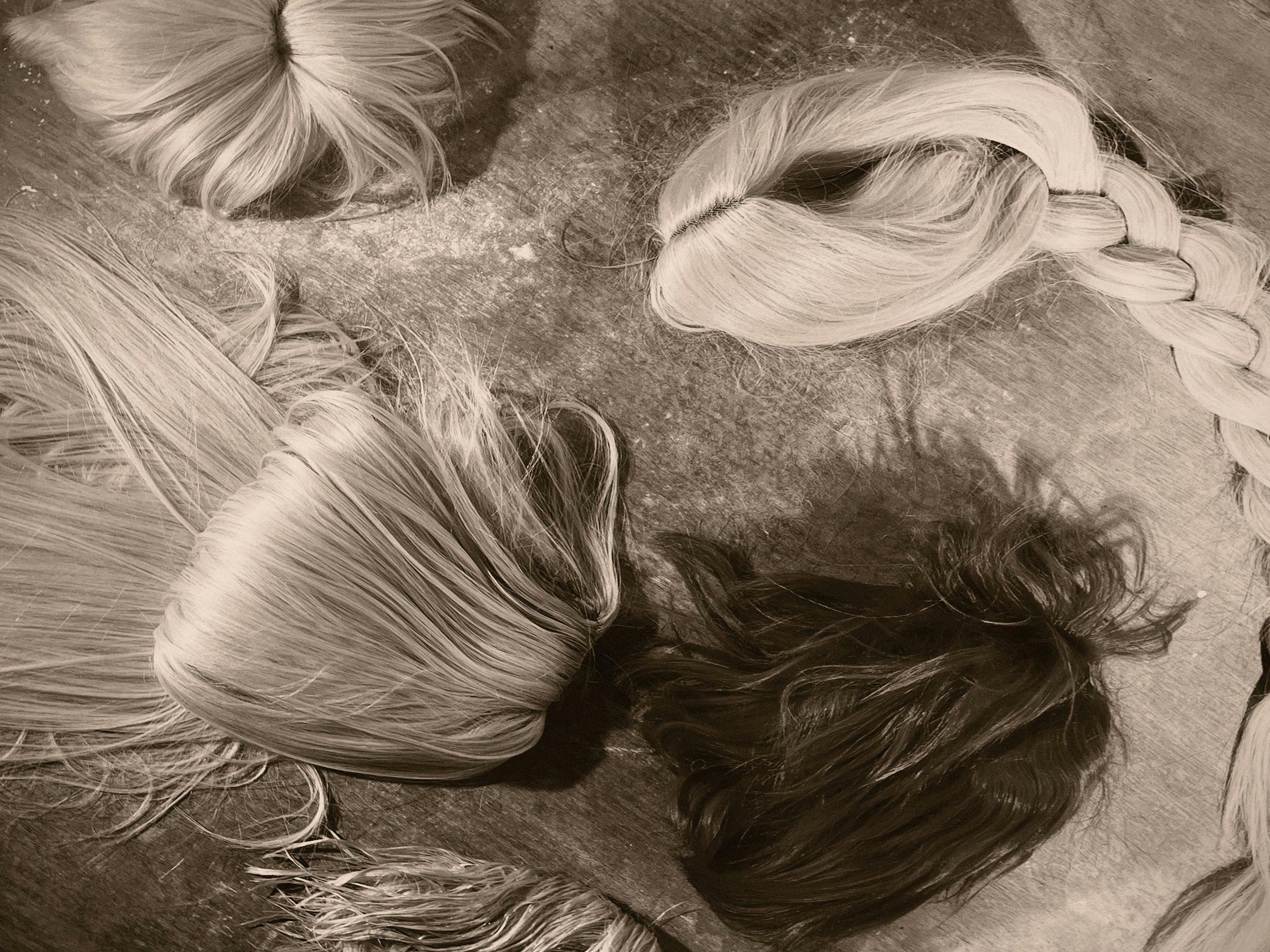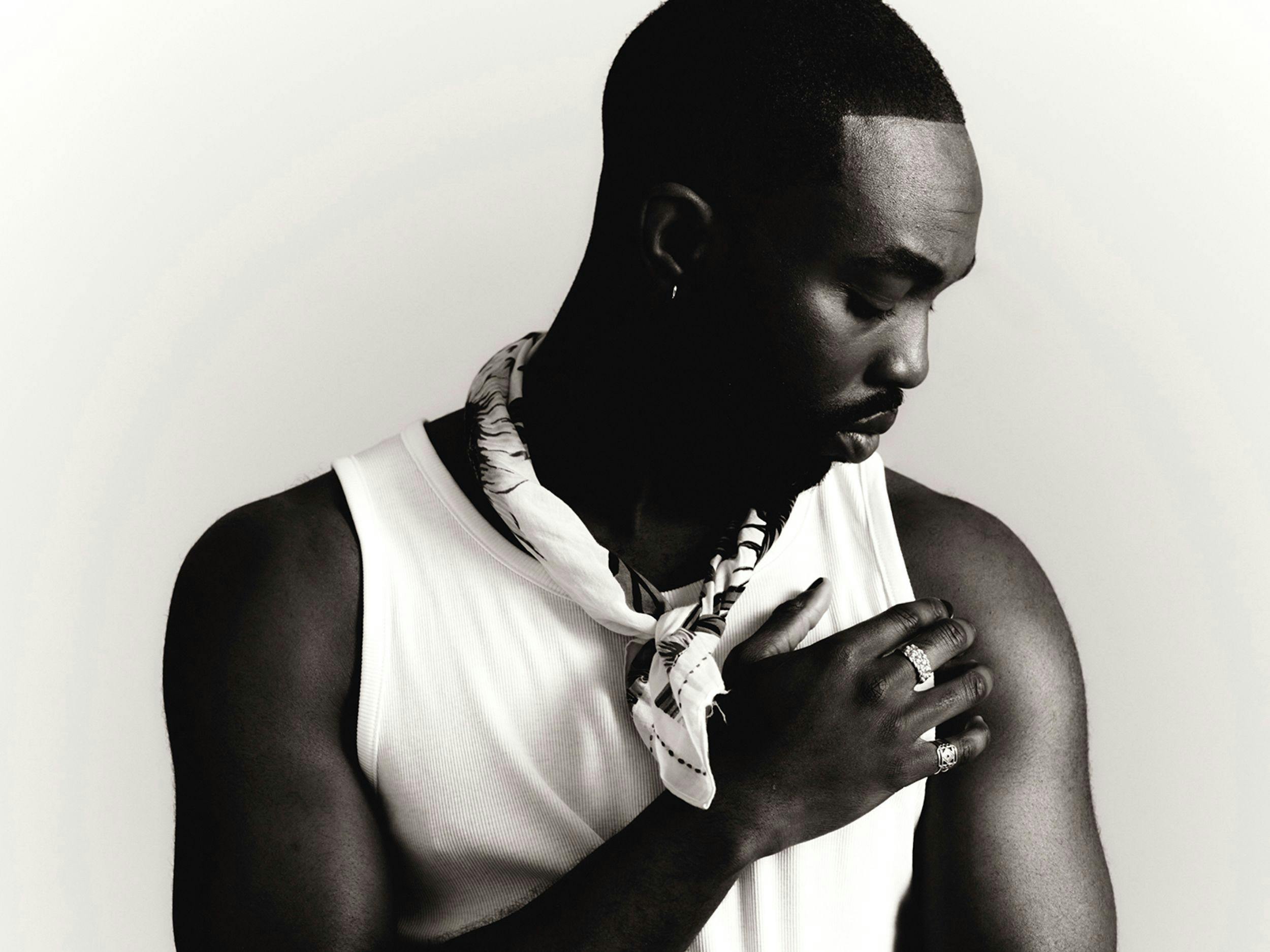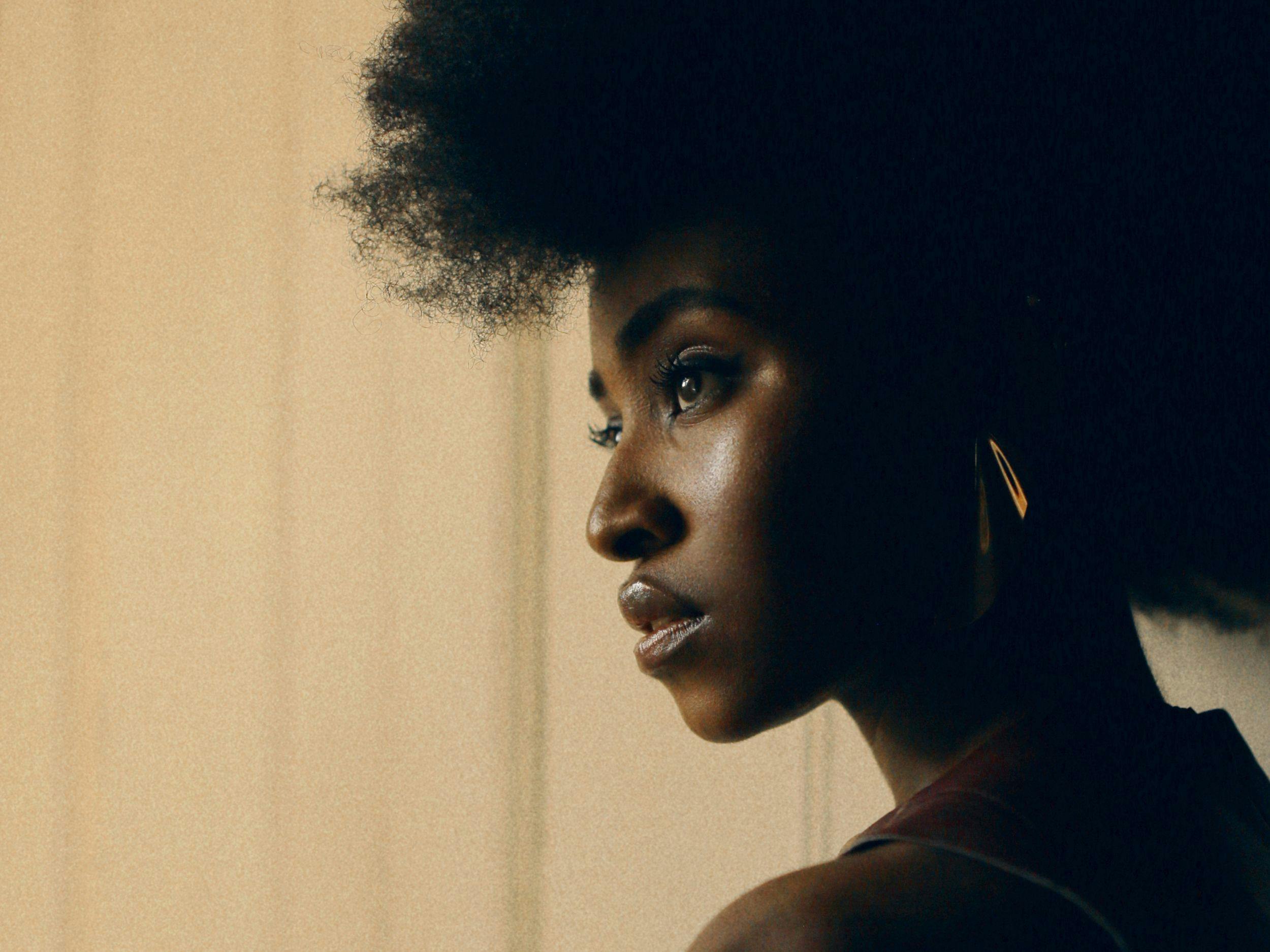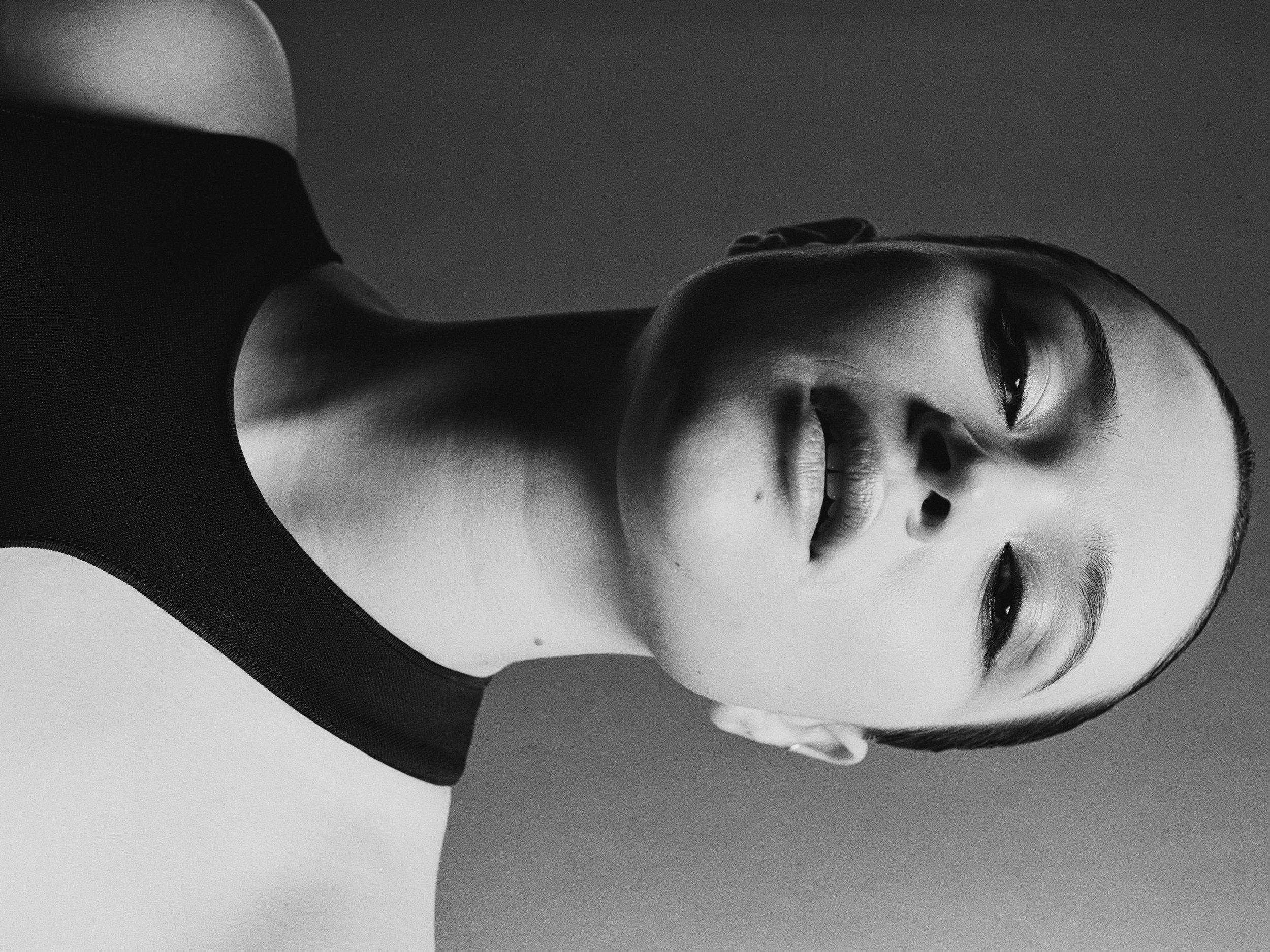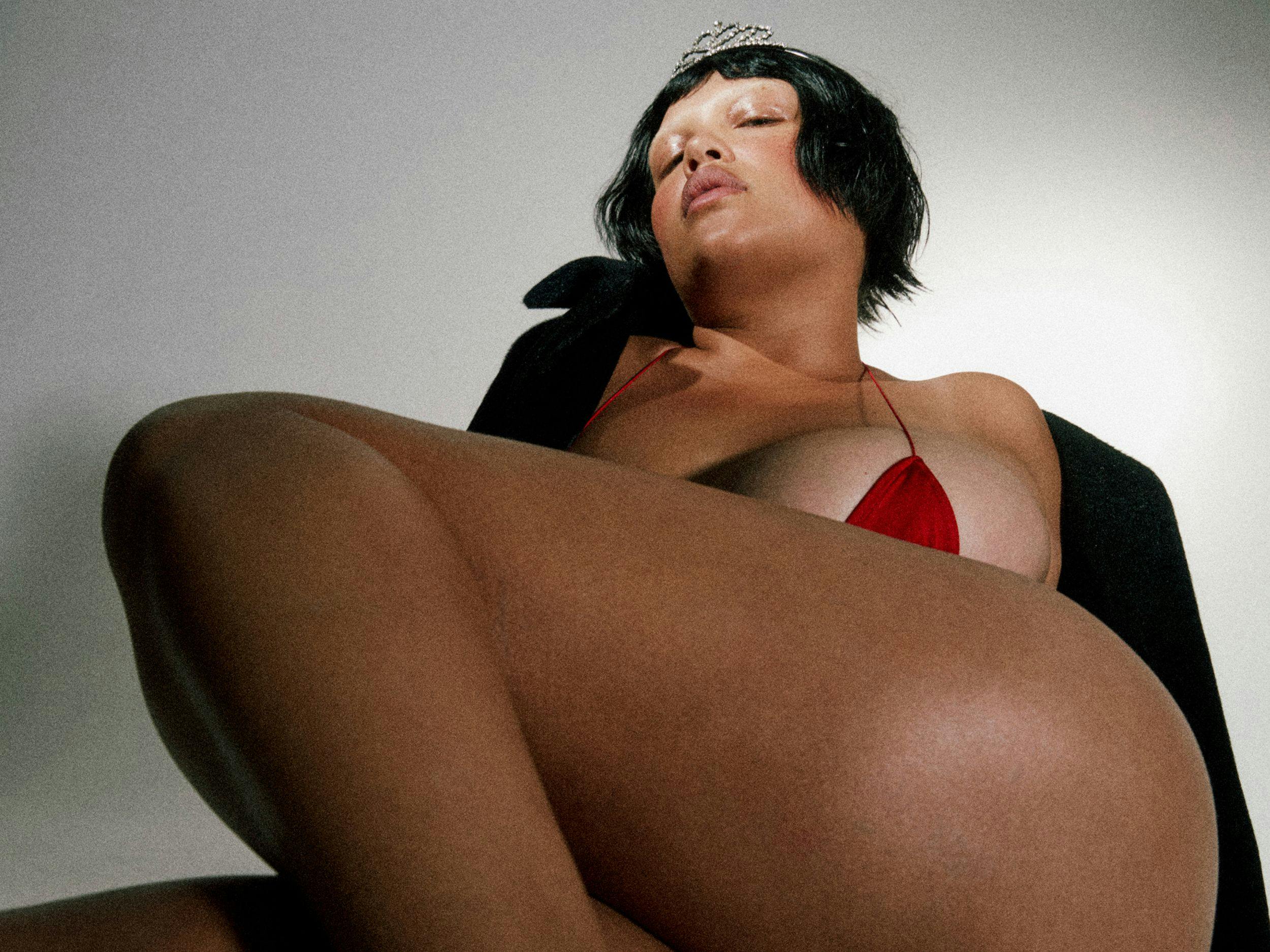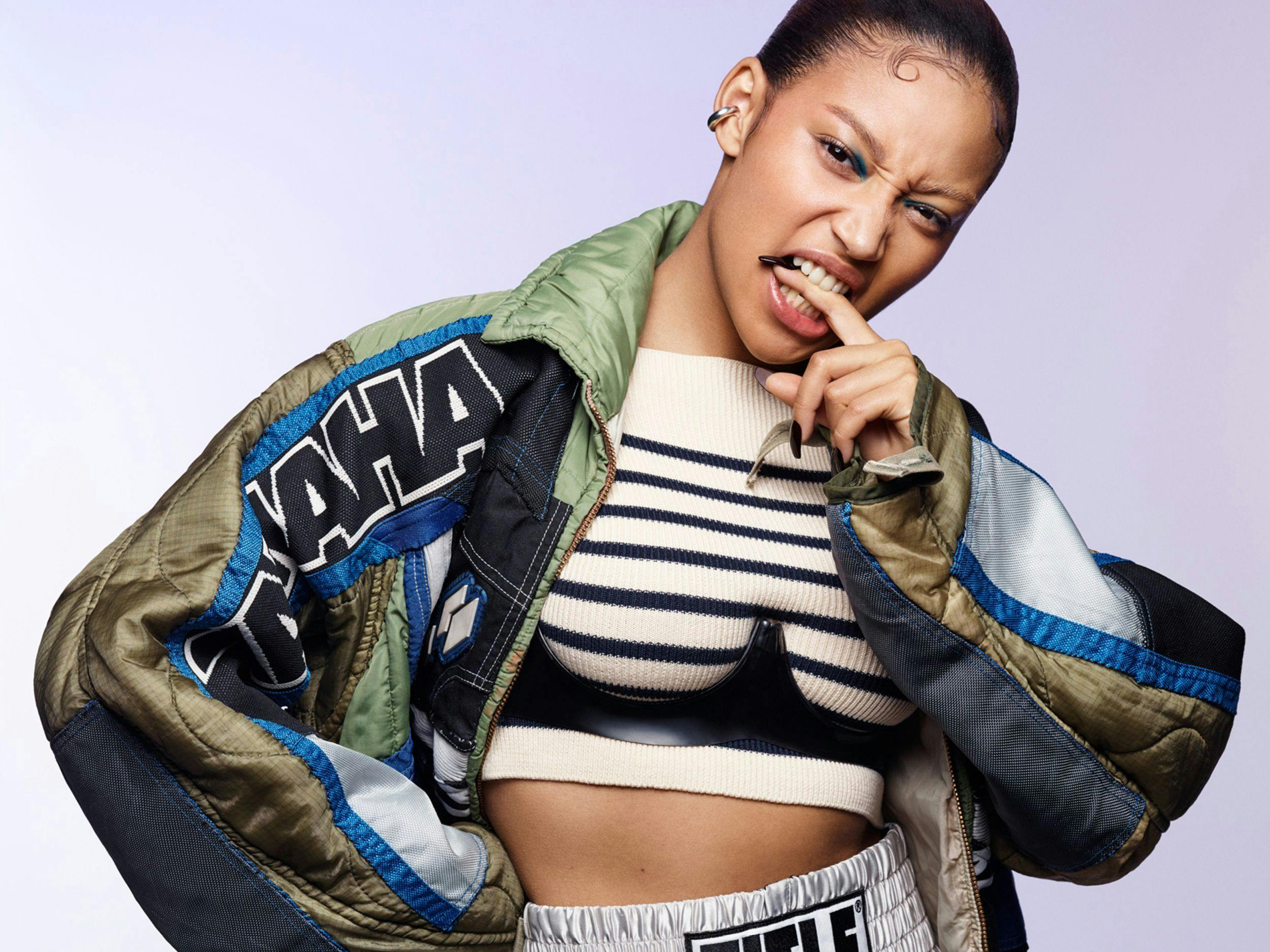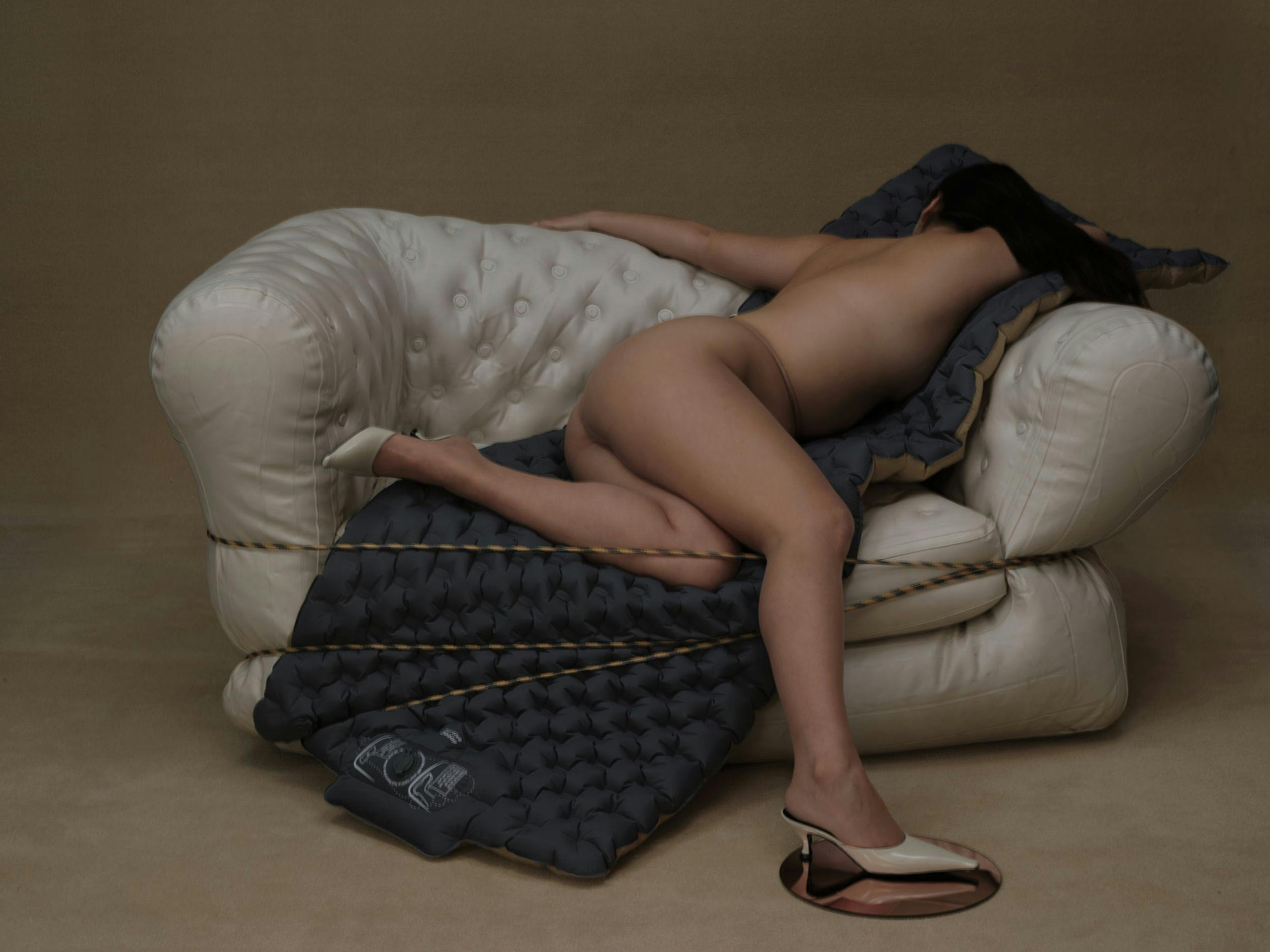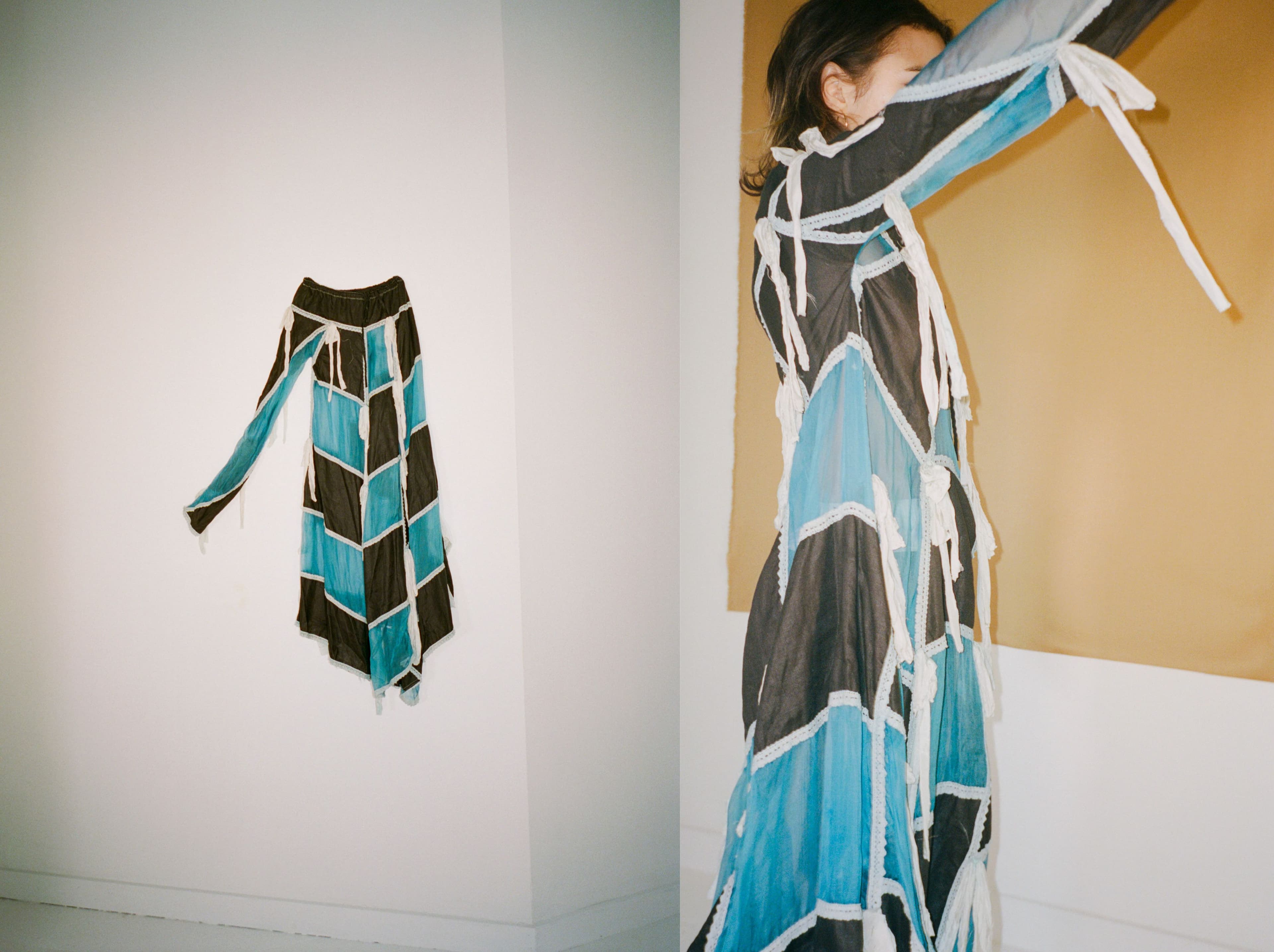
Andes Gascon wears dress by SC103
Herencia: Sophie Andes Gascon and Mariana Garibay Raeke
The dozens of countries that comprise Latin America stretch over six thousand miles across the Western Hemisphere, from the border city of Tijuana to the southern town of Ushuaia, facing Antarctica. The region’s culture and history are even vaster, with the influence of Indigenous and Pre-Colombian civilizations continuing through centuries of colonization, decades of recent political and economic change, and a newfound flourishing of social justice movements sweeping across the continent. With that rich legacy, Latinx artists are responsible for an abundance of creative variety in film, literature, design, dance, music, fashion, architecture, and the fine arts. As Hispanic Heritage Month comes to a close, photographer Andrés Altamirano and stylist Carolina Orrico share a project celebrating six such talents, reflecting the breadth and depth of the herencia—or inheritance—that informs their work today.
Artist: Sophie Andes Gascon
Mediums: fashion, textiles
Places of Origin: Canada and Brazil
Sophie Andes Gascon’s talent for fashion design is multigenerational: In high school, her father taught her how to knit and use a sewing machine, skills his mother had passed down to him. The tradition remains evident in Andes Gascon’s designs even today, in layered, patchworked looks that seem to contain within them experiences that precede the wearer’s own. The lookbook from her first collection, from 2015, juxtaposed an older model with a younger one, both of them dressed in folded, sculpted, and draped neutral tones which served as the backdrop for tied scarves, punctuated with the occasional bare back or exposed midriff. Evoking her heritage through youthfulness, Andes Gascon’s creations are the result of a yearslong journey from her early talent with a needle and thread to her present-day calling as a fashion designer.
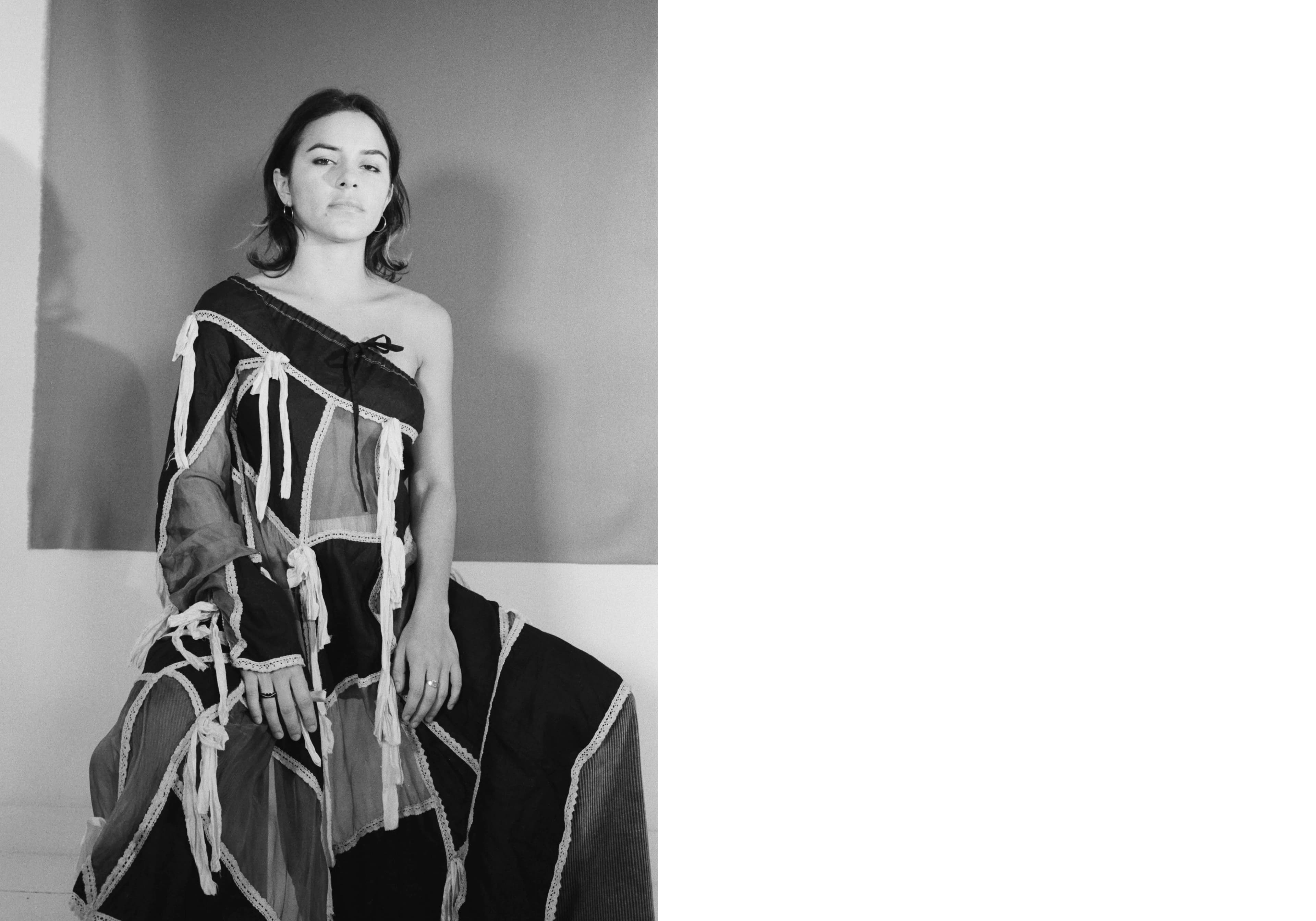
Dress by SC103
Born into a Canadian-Brazilian household, Andes Gascon’s childhood was sprawling. She lived in Canada until the age of six, when her family moved to her mother’s native Manaus, in the north of Brazil. After her family moved to the United States when she was seven, Andes Gascon returned to Manaus every summer, keeping her relationship with her mother’s heritage fresh and front of mind. She describes how her “parents felt it very important to stay connected to where [her mother] was from, retracing [her] journey from a small river town on the Amazon River, Coari, to the big city Manaus.“ Andes Gascon’s works from her earliest days of design were practical, could travel with her, and unfolded her family’s stories into three-dimensional space.
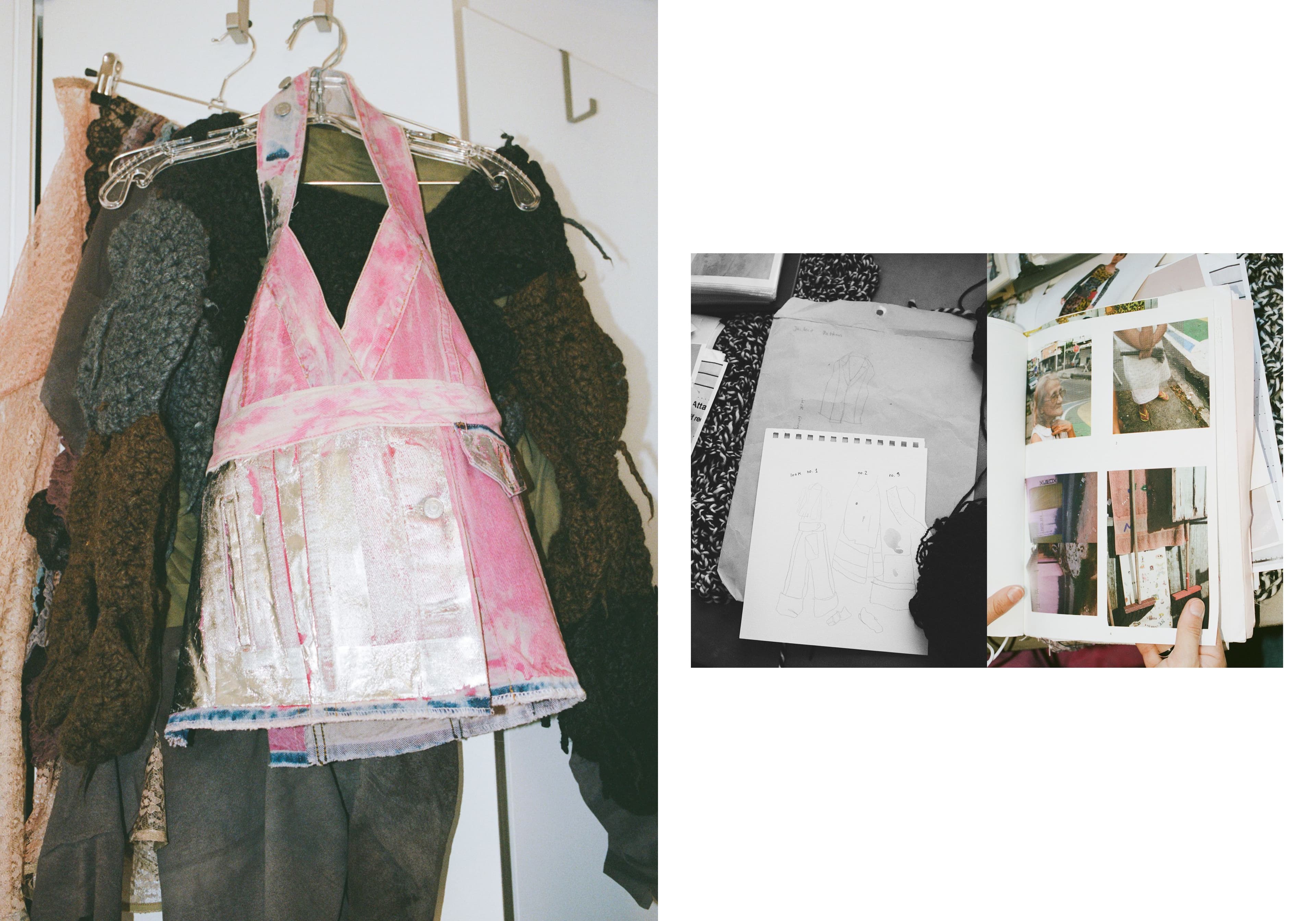
A sense of place tends to stand out in her garments. Her graduate collection from Pratt Institute in 2015 included a white dress with stitching throughout and deliberate staining, worn with a sash draped like a pageant queen’s and labeled “Miss Coari.“ That same throughline of personal history carried through her early work. Pants were decorated with imperfect hearts and a coordinated skirt set featured textured brown fabric meant to resemble animal fur or feathers. Her Spring 2016 lookbook paired the outfit with another with a similar silhouette in much sleeker material, with the words “galinha? vestida de“ below, suggesting a hen that has molted its feathers.
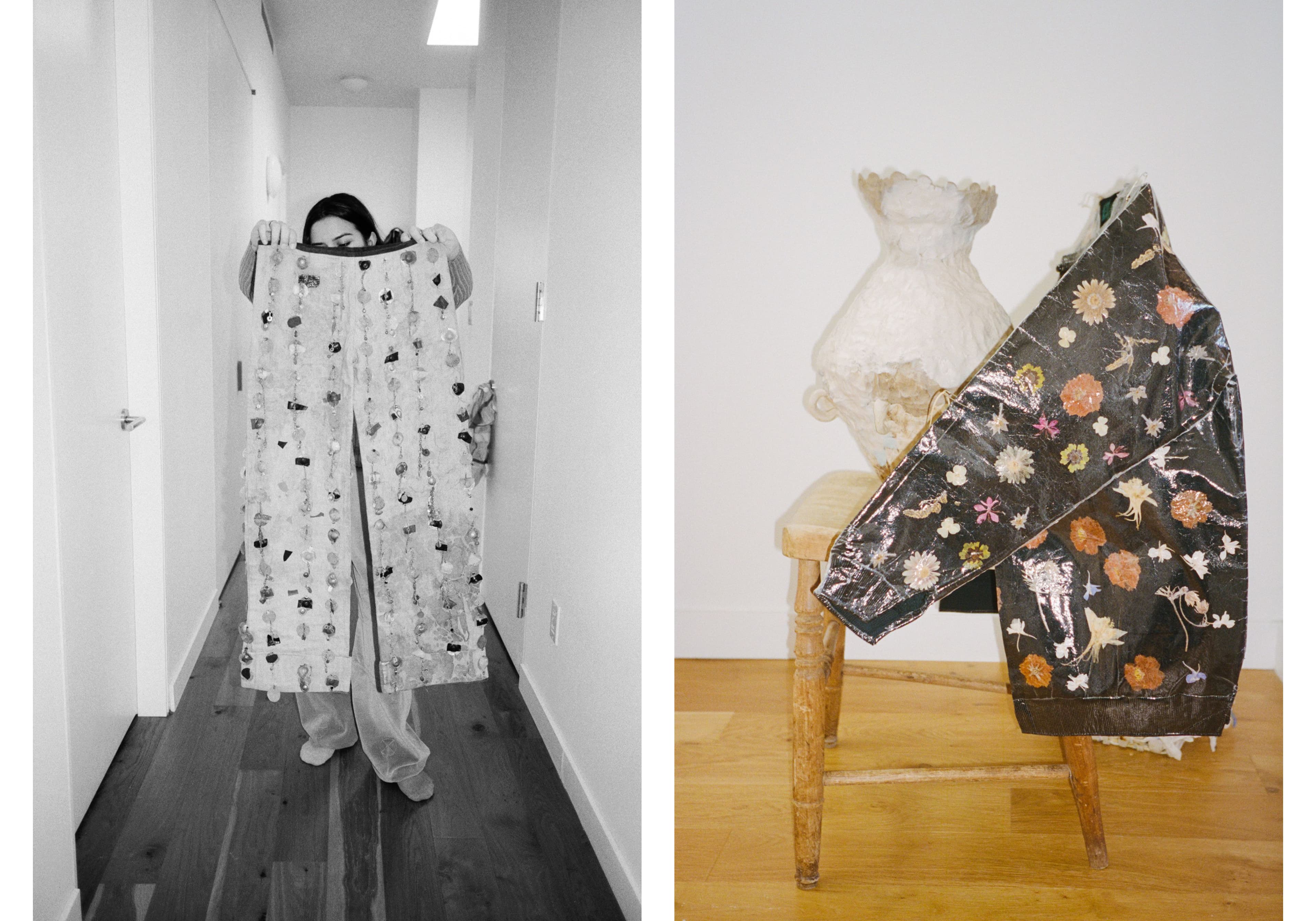
In 2019, Andes Gascon founded the label SC103 with collaborator Claire McKinney. While their designs demonstrate a fluid blend of their experiences and histories, the connection between the pair wasn’t instantaneous. Before they were even friends, they were roommates, and before that only classmates. The growth in their relationship is illustrated in their brand, which is organic, calm, and unforced. “We were able to develop our own ideas and æsthetic before ever working together,“ Andes Gascon says. “We now share a common language, each of us contributing our own strengths when designing together.“ There’s something old and something new about their work together, with previous collections like “Yours in Rock“ and “Bonds“ incorporating vintage pieces, chunky knits, Art Deco prints, psychedelic designs, a heavy cottage-core influence, and pieces of leather matched with printed utility fabric tied together in a trench coat.
Andes Gascon looks forward to keeping it all going. Because SC103 is rooted in individualism, she indulges in personal research. She swims in her own childhood memories and mines her parents’ love story in the name of sharing her emotions with the world at large.
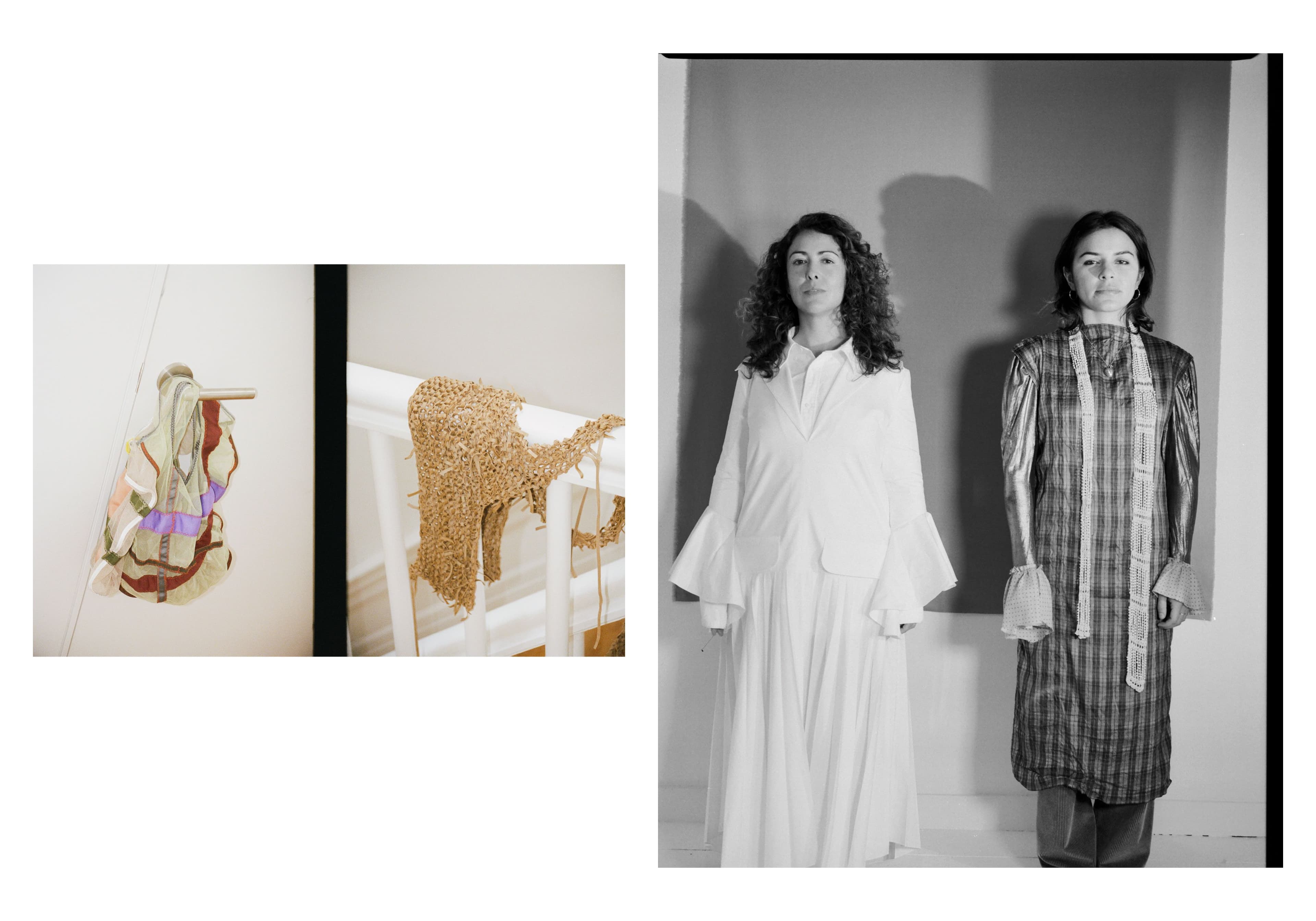
From left, Garibay Raeke wears dress by Khaite. Andes Gascon wears dress and shirt by SC103. Pants, talent’s own. Necklace by Cabinet Oseo.
Artist: Mariana Garibay Raeke
Mediums: painting, sculpture
Place of Origin: Mexico
Mariana Garibay Raeke has a hard time staying still. The artist, whose most recent work finds meaning in objectivity and the human body, creates from her studio and office in Park Slope, but her art positions her in many different places, accessing a range of feelings in particular times. Garibay Raeke spent her early twenties in California working, studying. and trying to find her footing before settling in Brooklyn after receiving her BFA from California College of the Arts in San Francisco in 2012. Lately, though, she often finds her way back to Mexico, both by traveling there and by rebuilding her relationship with her home through her work.
When we spoke in the spring, Garibay Raeke was beginning a new series of paintings, illustrating her signature motif, the body, and perhaps even more specifically, her own body, as a manifestation of the feelings and environments that surround it. “I’m trying to work through this idea of the body as a vessel, this form that contains all of these things that are not easy to express through words: memories, emotions, feelings, and physical markings that are on the body,“ she explains. “There’s also all these other layers of emotion that are captured by the body—that’s where our memories reside.“
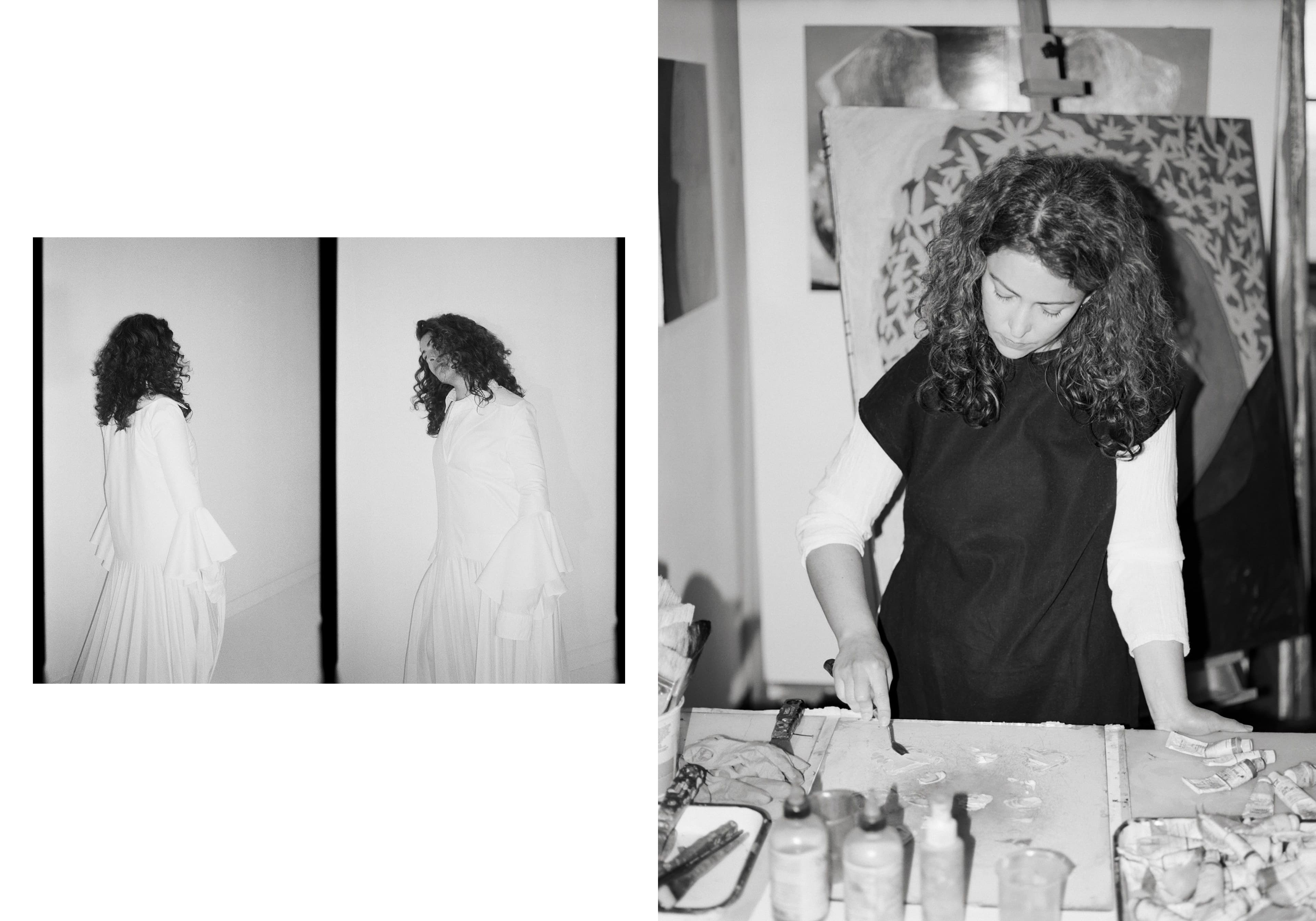
Left: Dress by Khaite. Right: All clothing, Garibay Raeke’s own.
The result of this thinking is “Torso,“ an ongoing collection of oil and acrylic paintings on wood that begin with Garibay Raeke sketching outlines of her own back. “I believe making should be scary, in some capacities,“ she says of her work. “It is a very safe space that I am working within, like my studio, but it is about putting myself in situations that take me out of my comfort zone, that challenge me in some capacity.“ The paintings, after all, involve a routine of staring into a mirror to know one’s body, and to accept it. Her “Torso“ pieces are deeply saturated abstract visions of her own self in vivid outline and emotional brush strokes. While Garibay Raeke has surely spent plenty of time ruminating on her relationship with her own physicality, her portfolio is also dotted with black-and-white illustrations, a meditation on how weather influences the body using watercolor, sumi ink, and graphite. In every way, Garibay Raeke is compelled to grow, pushed to be open to what’s happening around her.
The figures in “Torso“ are strikingly similar to those featured in Garibay Raeke’s 2021 exhibit “The Attempt of Feeling,“ wherein a gallery of her work was interrupted with spectacular hanging planters, live flowers dripping from the ceiling, and lush bouquets of greenery suspended in midair. “The Attempt“ was a reflection of degradation and what it means to think something is as gorgeous weathered and faded as it was new. Garibay Raeke’s work also contains a pointed intimacy. She blurs what’s public and private—the body, death in public view—and highlights so many of our obsessions with permanence.
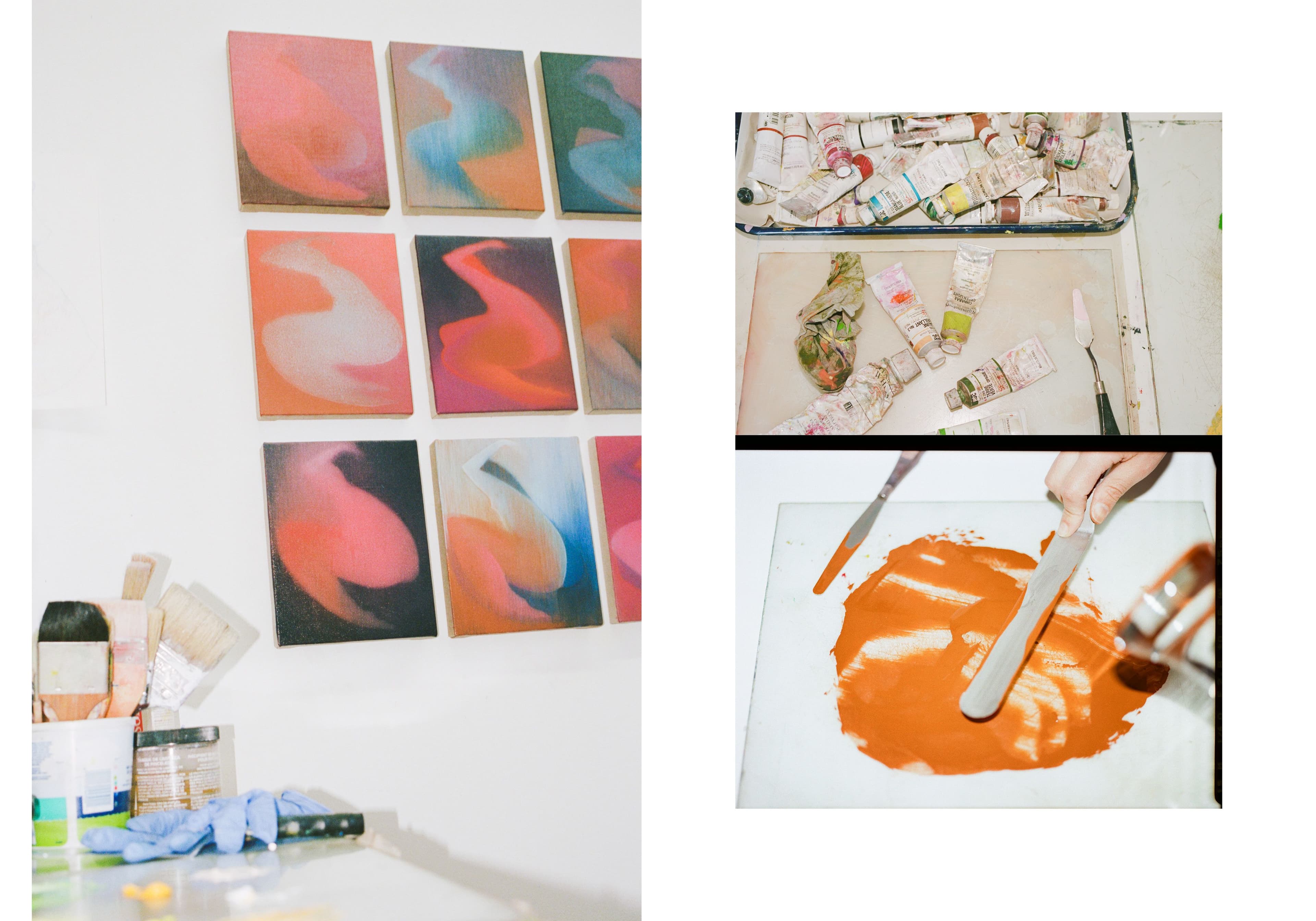
Garibay Raeke’s exploration of the human form is not unfounded. She researches and creates her art in the same breath, and embraces learning more through collaboration. In 2018, Garibay Raeke was one of two visual artists at a residency for dancers in Oaxaca, Mexico, where she approached the body more explicitly as an art form, what might be captured where pen and paper can’t reach. “It was mostly having conversations with others about materials, about process, about ideas,“ she remembers. “It presented me with a new set of questions and possibilities.“ Relationships formed, then brought along new mediums. It was in Oaxaca where she met an artist, Tata Mosaicos, who makes clay tiles. Together in 2020, the pair collaborated on an interactive installation called “Terreno Variable. Terreno Cotidiano. Terreno Compartido.“ The project involved visitors moving clay tiles around the gallery space, to build with them, destroy with them, or create walls and borders with them. With her projects in which the viewer becomes entangled with the artist, Garibay Raeke doesn’t always know what the result will be by the time they are finished. She remembers “Terreno“ bringing up “all of these layers of the ways in which we participate and the ways in which a small action or a gesture, over time, layered on top of each other, can build a more complex whole.“
Garibay Raeke doesn’t seek to define a relationship with the body or the environment, but hopes to explore. She is ever aspirational about what looking inward can reveal about human cultures. At the root of everything, really, the only thing we are promised is ourselves and each other.
As a nonprofit arts and culture publication dedicated to educating, inspiring, and uplifting creatives, Cero Magazine depends on your donations to create stories like these. Please support our work here.
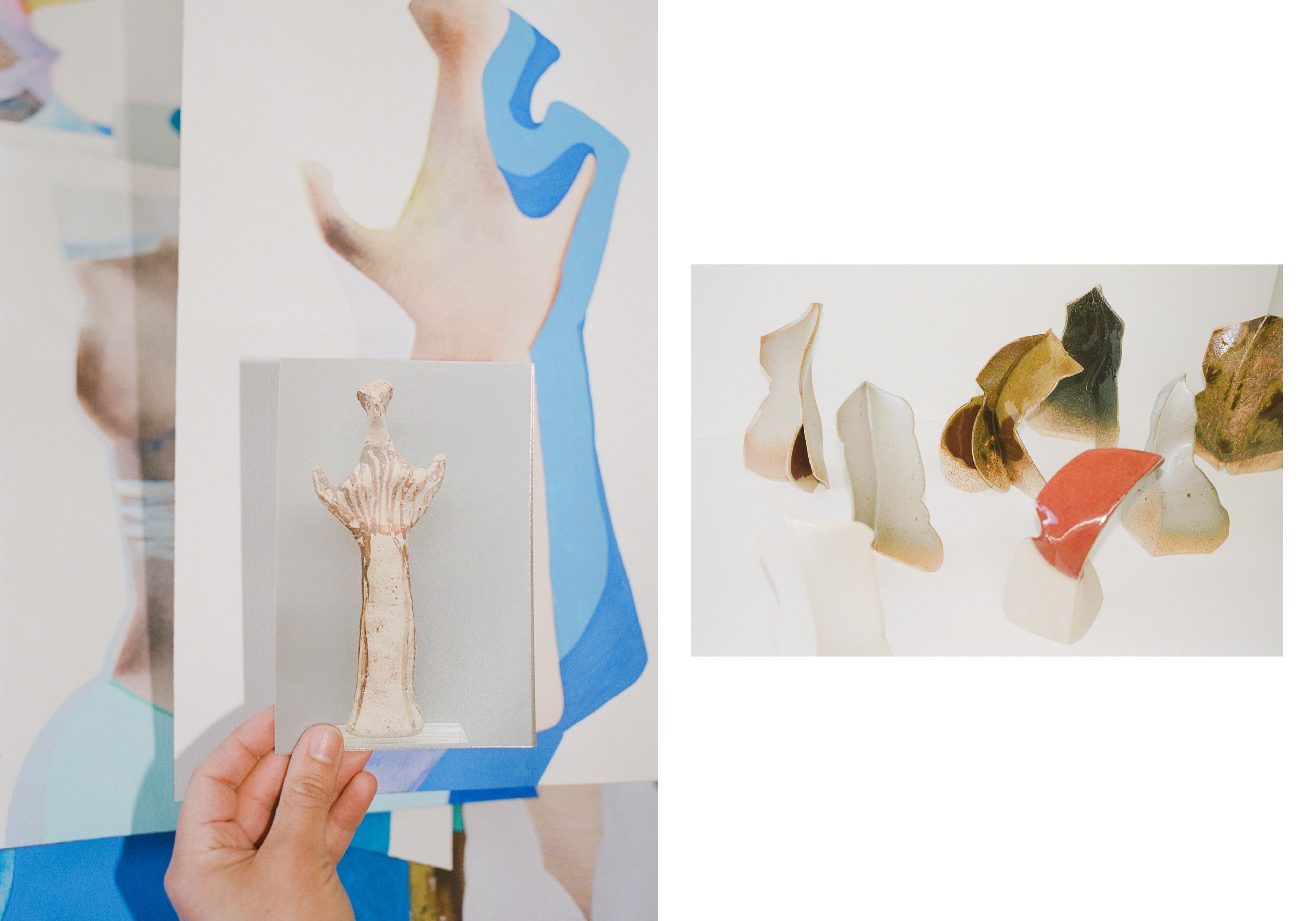
As a nonprofit arts and culture publication dedicated to educating, inspiring, and uplifting creatives, Cero Magazine depends on your donations to create stories like these. Please support our work here.
